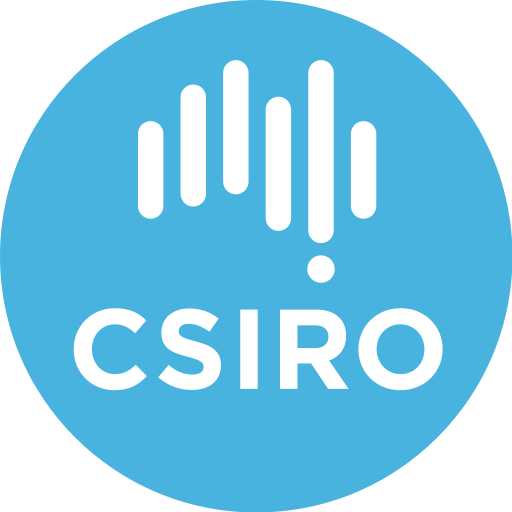Format
DIGITAL - OGC OWS Context
17 record(s)
Type of resources
Topics
Keywords
Contact for the resource
Provided by
Formats
Update frequencies
Status
draft
-

This dataset has been superseeded by GBR4_H2p0 (2010-09 to present) and it was removed from the NCI fx3 project and THREDDS server in April 2024. An archive copy has been retained by the custodians, and access can be arranged on request. Results from version 1.85 of the 4 km resolution regional-scale hydrodynamic model of the great Barrier Reef (GBR4). It was forced with BlueLink OceanMAPS data on the open boundaries and Bureau of Meteorology model ACCESS-R for surface atmospheric data. The tide was introduced through 22 constituents derived from the global CSR tide model, and 22 river boundaries incorporated measured stream flow and temperature data from QLD DNRM's gauging stations. This model version was published for reference in the SIEF report from January 2016, but was later discovered to have been forced with incorrect (multiplicative error) rainfall levels, and the 2015 results contain salinity errors. This model configuration and associated results dataset may be referred to as "GBR4_H1p85" according to the eReefs simulation naming protocol.
-
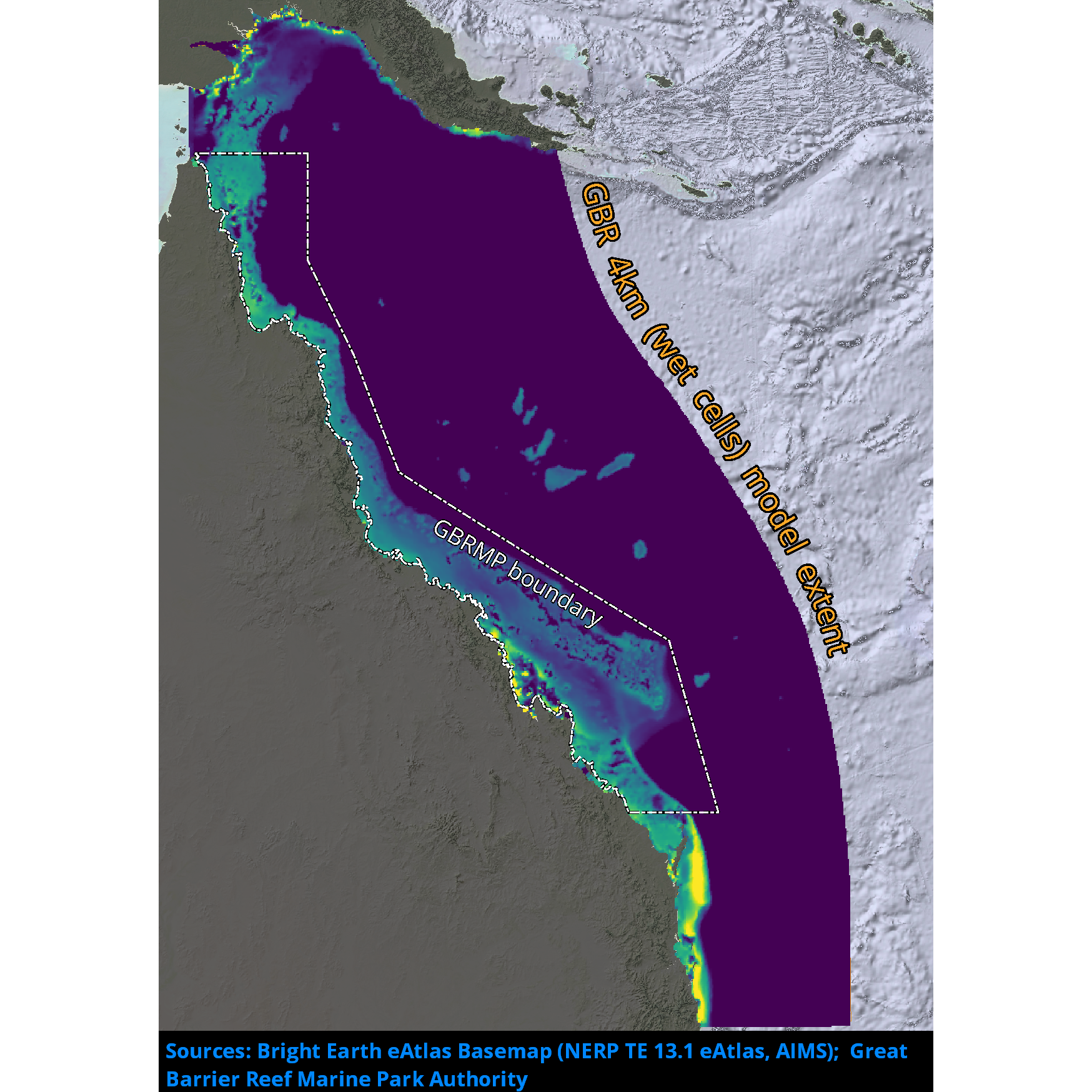
Results from version 3.1 of the 4km-resolution regional-scale biogeochemistry and sediments model of the Great Barrier Reef (GBR), forced by version 2.0 of the 4km-resolution hydrodynamic model and with catchment forcing from P2R SOURCE Catchments with pre-industrial catchment condition from December 01, 2018 to June 30, 2018 and then Empirical SOURCE Catchments with pre-industrial catchment condition from July 1, 2018 to April 30, 2019. This model configuration and associated results dataset may be referred to as "GBR4_H2p0_B3p1_Cq3p_Dhnd" according to the eReefs biogeochemical simulation naming protocol. The model ran in hindcast-mode as one of a suite of simulations which included baseline (GBR4_H2p0_B3p1_Cq3b_Dhnd) and reduced-load (GBR4_H2p0_B3p1_Cq3R_Dhnd) catchment scenarios.
-

Results from version 3.1 of the the 4km-resolution biogeochemistry and sediments model of the Great Barrier Reef (GBR4), forced by version2 of the Hydrodynamic model and by a reduced-loads catchment scenario which is derived from SOURCE Catchments with 2019 catchment condition (q3b) with anthropogenic loads (q3b – q3p) reduced according to the percentage reductions of DIN, PN, PP and TSS specified in the Reef 2050 Water Quality Improvement Plan (WQIP) 2017-2022 as calculated in Brodie et al., (2017). Further, the reductions are adjusted to account for the cumulative reductions already achieved between 2014 and 2019 that will be reflected in the 2019 catchment condition used in q3b. This model configuration and associated results dataset may be referred to as "GBR4_H2p0_B3p1_Cq3R_Dhnd" according to the eReefs biogeochemical simulation naming protocol. The model ran in hindcast-mode as one of a suite of simulations which included baseline (GBR4_H2p0_B3p1_Cq3b_Dhnd) and pre-industrial (GBR4_H2p0_B3p1_Cq3p_Dhnd) catchment scenarios.
-
DEPRECATED: This dataset has been superseded by GBR1_H2p0_B3p2_Cfur_Dnrt Results from an early version of the 1km-resolution shelf-scale biogeochemical model of the Great Barrier Reef (GBR1). This version of the model was forced by version 1.85 of the eReefs GBR 1 km resolution hydrodynamic model, and made several improvements to the v926 (B1p0) model for: more accurate optical calculations; Normanby – particulate and dissolved loads corrected; Sediment tracer “Dust” added; Oxygen mass conservation part of diagnostics. This model configuration and associated results dataset may also be referred to as "GBR4_H1p71_B1p9_Cfur_Dnrt" according to the eReefs simulation naming protocol, but that protocol was not codified until after this dataset was superseeded, so it is usually referred to by the v924 identifier.
-
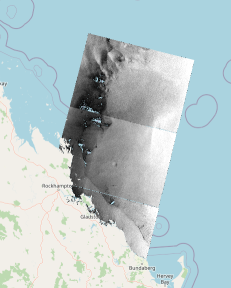
Sentinel-1 SAR medium resolution (approximately 20m-pixel size) reprojected and calibrated product produced by CSIRO under eReefs Phase 5 using the SNAP (Sentinel Application Platform) toolbox. This product was derived from Level 1 IW GRD (VV polarization), placed onto a regular grid using nearest neighbor resampling and radiometrically filtered using a three-pass combination of filters to reduce speckle.
-
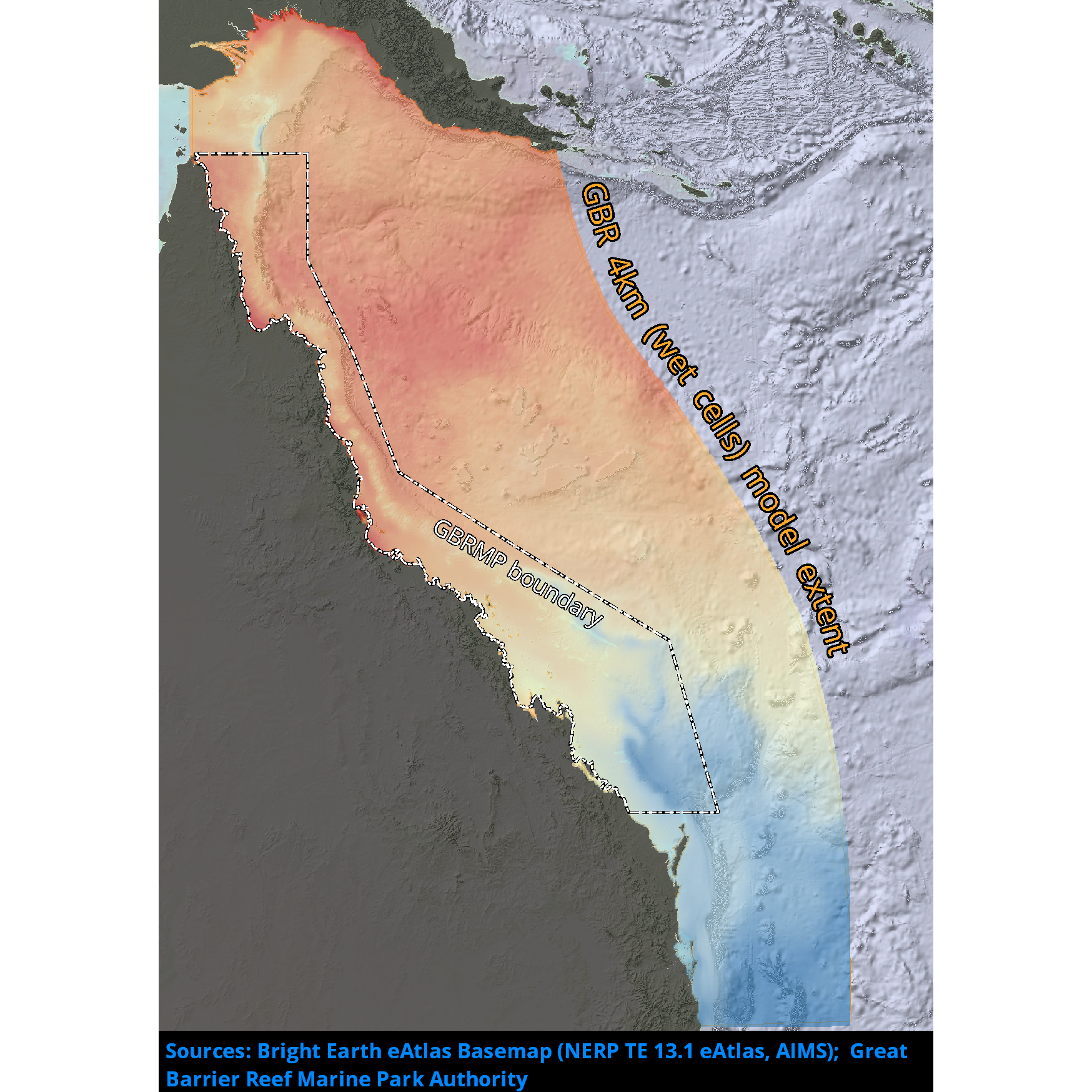
Results from version 2.0 of the 4km-resolution regional-scale hydrodynamic model of the Great Barrier Reef (GBR4). This model was forced with BlueLink Ocean Modelling and Prediction System (OceanMAPS) model results on the ocean boundaries and Bureau of Meteorology ACCESS-R model for surface atmospheric data. The tide was introduced through 22 constituents derived from the global CSR tide model, and the river boundaries incorporate measured stream flow and temperature data from QLD DNRM's gauging stations for 22 rivers, and estimated flows and loads for 49 additional rivers. There were no known forcing problems. This model configuration and associated results dataset may be referred to as "GBR4_H2p0" according to the eReefs simulation naming protocol. The model ran in near-real-time mode, updating daily, until January 2024 when the 2023/24 monsoon season caused damage to sensors in the catchments, and we lost access to the critical river-flow forcing dataset.
-
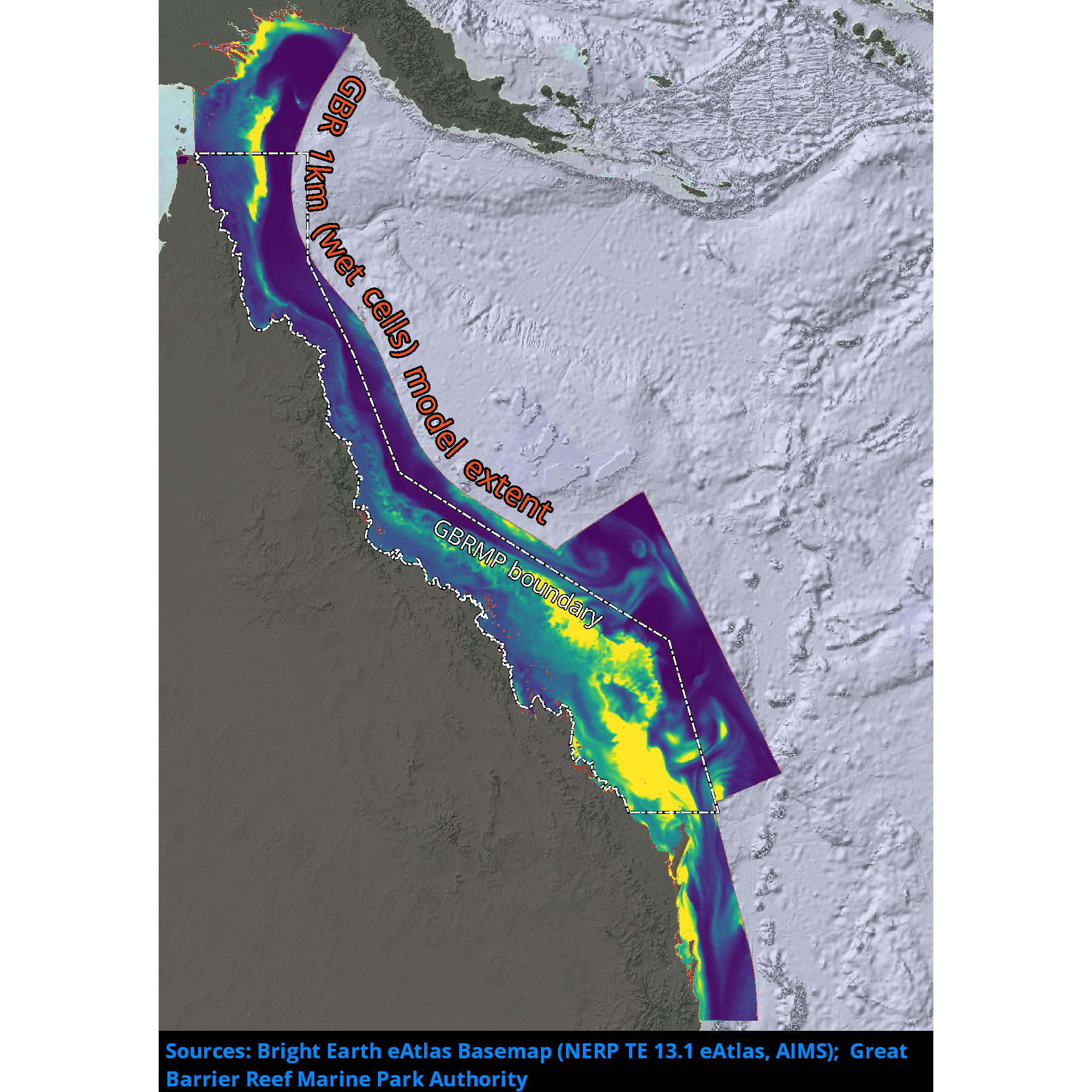
Results from version 3.2 of the 1km-resolution regional-scale biogeochemistry and sediments model of the Great Barrier Reef (GBR1), forced by version 2.0 of the 1km-resolution hydrodynamic model and with Furnas relationships for wet and dry tropics rivers as catchment inputs. This model configuration and associated results dataset may be referred to as "GBR1_H2p0_B3p2_Cfur_Dnrt" according to the eReefs biogeochemical simulation naming protocol. The model ran in near-real-time mode, updating daily, until January 2024 when the 2023/24 monsoon season caused damage to sensors in the catchments, and we lost access to the critical river-flow forcing dataset.
-

Results from version 3.1 of the 4km-resolution regional-scale biogeochemistry and sediments model of the Great Barrier Reef (GBR4), forced by version 2.0 of the 4km-resolution hydrodynamic model and with Furnas relationships for wet and dry tropics rivers as catchment inputs. This model configuration and associated results dataset may be referred to as "GBR4_H2p0_B3p1_Cfur_Dnrt" according to the eReefs biogeochemical simulation naming protocol. The model ran in near-real-time mode, updating daily, until January 2024 when the 2023/24 monsoon season caused damage to sensors in the catchments, and we lost access to the critical river-flow forcing dataset.
-
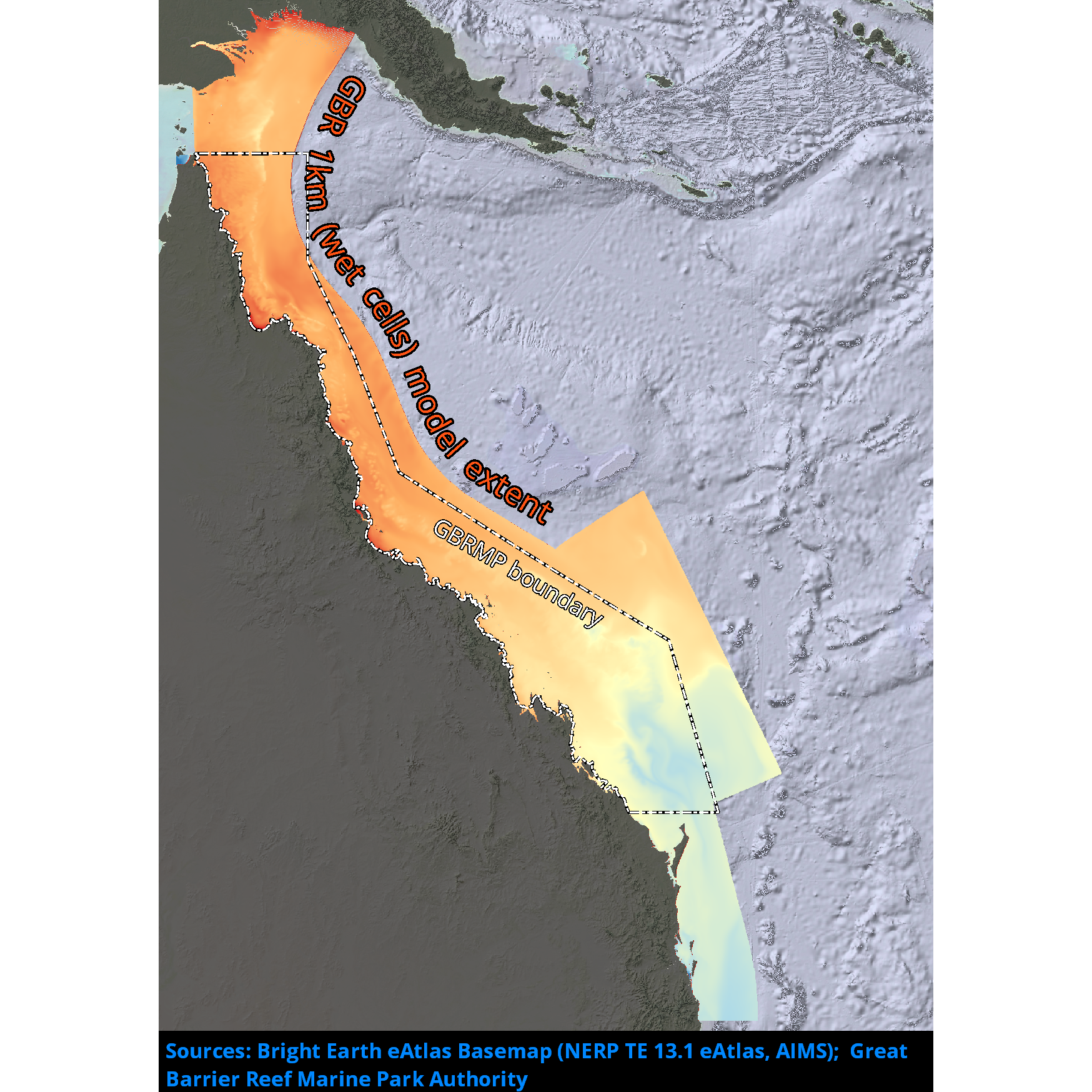
Results from version 2.0 of the 1km-resolution shelf-scale hydrodynamic model of the Great Barrier Reef (GBR1). This model is nested within version 2.0 of the 4km-resolution hydrodynamic model (GBR4) data at the ocean boundaries, used the Bureau of Meteorology ACCESS-R model for surface atmospheric data and incorporated measured flow data from gauging stations at the river boundaries from QLD DNRM. This model configuration and associated results dataset may be referred to as "GBR1_H2p0" according to the eReefs simulation naming protocol. The model ran in near-real-time mode, updating daily, until January 2024 when the 2023/24 monsoon season caused damage to sensors in the catchments, and we lost access to the critical river-flow forcing dataset.
-
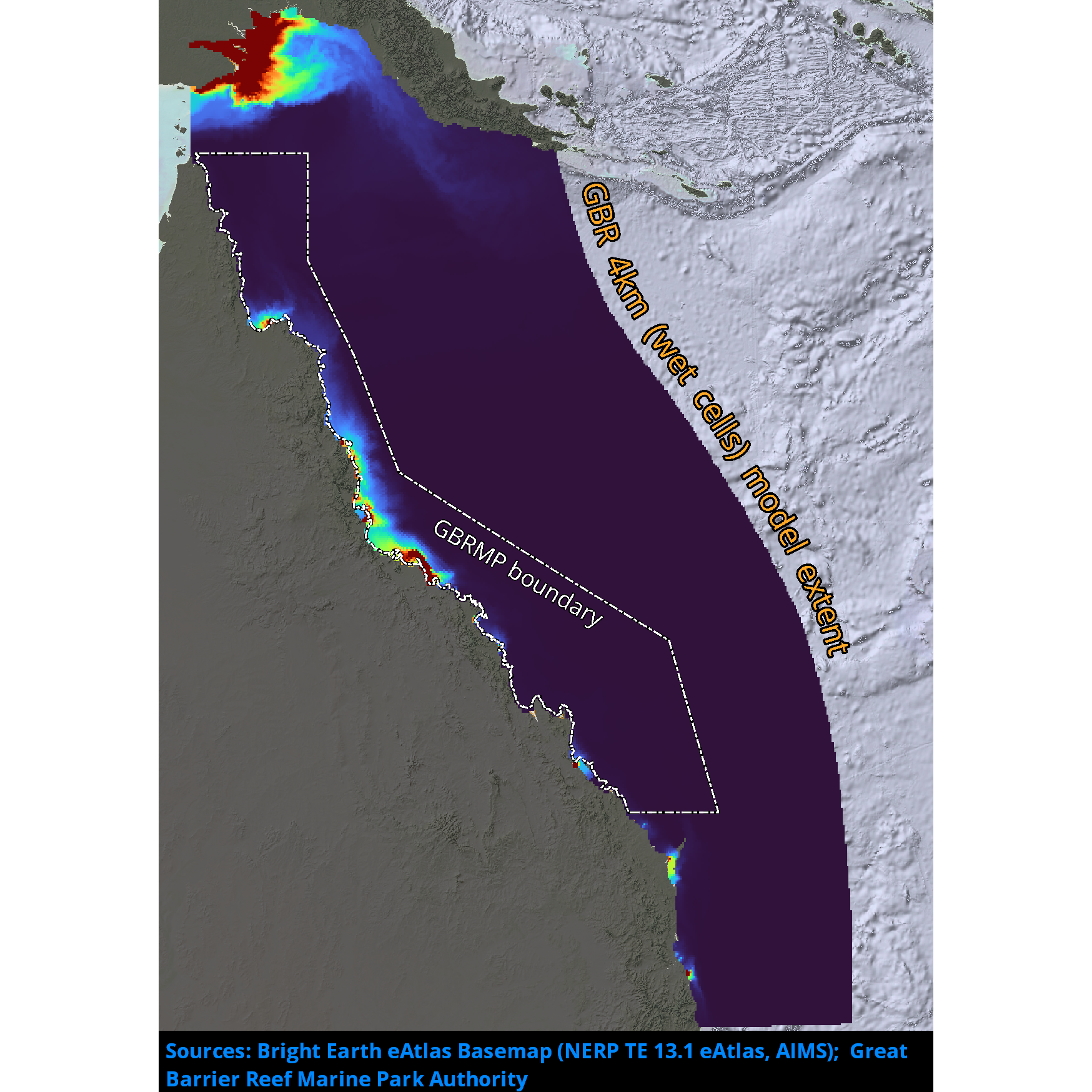
Passive river tracer results derived from version 2.0 of the 4km-resolution regional-scale hydrodynamic model of the Great Barrier Reef (GBR4). This model configuration and associated results dataset may be referred to as "GBR4_H2p0_Rivers" according to the eReefs simulation naming protocol. The model ran in near-real-time mode, updating daily, until January 2024 when the 2023/24 monsoon season caused damage to sensors in the catchments, and we lost access to the critical river-flow forcing dataset.
